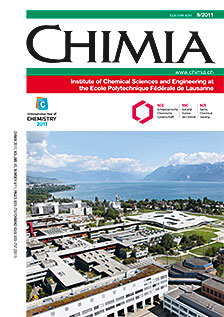Catalytic Asymmetric Functionalization of Inert Bonds and Synthesis of Bioactive Natural Products
DOI:
https://doi.org/10.2533/chimia.2011.656Keywords:
Asymmetric catalysis, C-c activation, C-h activation, Natural products, Transition metalsAbstract
The direct and enantioselective functionalization of inert bonds such as carbon–hydrogen and carbon–carbon is an emerging tool towards more sustainable and efficient synthetic methods. The individual activation pathways like concerted deprotonation metalations, directed activations, ?-carbon eliminations or retro-allylations proceed by completely different mechanisms and therefore have complementary requirements and different associated challenges. A careful fine-tuning of the transition-metal complex is critical for each mechanism, but a very broad structural space can be covered as well. These methods enhance the synthetic chemist's toolbox allowing more concise, efficient synthetic routes to be executed in target-oriented synthesis. This is illustrated by the examples of a synthesis of largazole and the core of stachyflin from our group.Downloads
Published
2011-09-30
Issue
Section
Scientific Articles
License
Copyright (c) 2011 Swiss Chemical Society

This work is licensed under a Creative Commons Attribution-NonCommercial 4.0 International License.
How to Cite
[1]
N. Cramer, Chimia 2011, 65, 656, DOI: 10.2533/chimia.2011.656.







